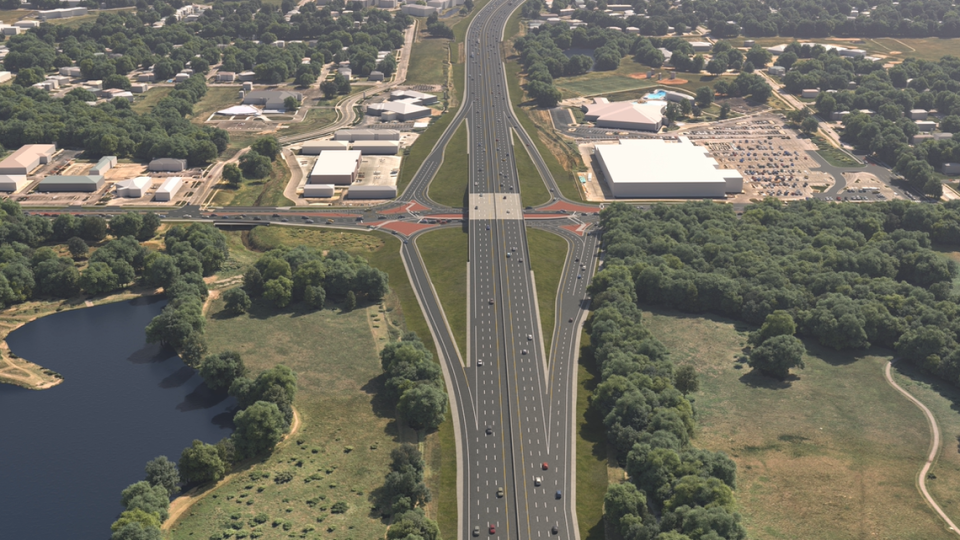Diverging diamond interchanges? Major changes are coming to K-96 in northeast Wichita
K-96 highway in northeast Wichita will undergo a major transformation beginning in 2027.
The improvement project, aimed at eliminating bottlenecks and making interchanges safer, will widen the stretch of highway between I-135 and 21st Street North from four lanes to six and upgrade interchanges at Hillside, Oliver, Woodlawn, Rock, Webb, Greenwich and 21st.
“In a lot of these parts of K-96, rush hour hits and you’re stuck essentially,” said J.B. Wilson, Wichita metro spokesperson for the Kansas Department of Transportation.
50,000 vehicles traverse the stretch of highway daily but KDOT data indicates that number could double to 100,000 vehicles a day by 2050. Increasing capacity will be key to minimizing congestion and emissions, Wilson said.
“If you have traffic backed up, you have people on that stretch of the highway longer, you have vehicles idling,” he said.
“We want to keep people moving.”
Preliminary design concepts and the findings of an environmental impact study for the project will be shared next week at a public open house hosted jointly by KDOT, the Federal Highway Administration, the city of Wichita and Sedgwick County. The event is scheduled for 5-7 p.m. Thursday, April 11, at the Hughes Metroplex.
“It will be a good way for people to see how we built on their feedback from the February 2023 open house and how we’ve used it and implemented it,” Wilson said.
Roads and Bridges, a transportation trade magazine, has previously reported that K-96 improvements will cost $260 million, but Wilson said state and local funding likely won’t be locked into place until 2025 and the design won’t be finalized until 2026.
Diverging diamond interchanges
The preliminary design concept calls for converting five of the seven interchanges — Hillside, Oliver, Woodlawn, Rock and 21st Street North — into a new style for Wichita that eliminates left turns against oncoming traffic.
Diverging diamond interchanges have already been implemented in Junction City, Manhattan, Olathe, Lenexa and Gardner.
K-96 has about 200 accidents a year, many of which occur when vehicles are getting on or off the highway, Wilson said.

Diamond interchanges use signalized traffic lanes to minimize conflict points, diverting traffic to the left side of the road so that vehicles can either make a free left turn onto the frontage road or continue through to the second signal and be diverted back to the right side of the road.
“It makes for easier access to K-96. There’s less stop time at traffic lights, and it makes for easier pedestrian crossing,” Wilson said, referring to the safe connections that will be added for walkers, joggers and cyclists.
The Greenwich interchange has undergone improvements in recent years, so the plan only calls for adding additional turn lanes to account for future traffic projections. Because of space limitations, the loop interchange at Webb Road would be reconfigured as ramps to minimize traffic backing up on K-96 as vehicles attempt to exit the highway.
Wilson said it’s too early to know for sure what closures and detours construction will bring or how long it will take for improvements to be completed.
“Since this is still in the preliminary design phase, we really don’t know. A lot of those judgment calls get made with the contractors in conjunction with the engineers . . . closer to construction date,” he said.
Paving will be replaced on K-96 between 21st Street North and I-35, but that stretch of highway will remain four lanes instead of six.

